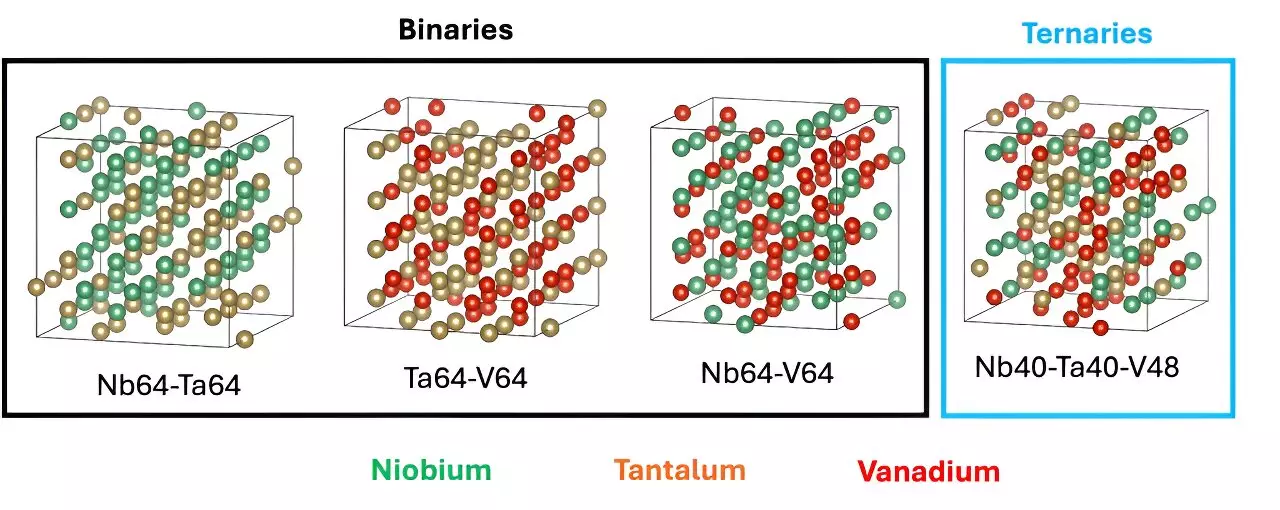Artificial intelligence (AI) has begun to redefine the boundaries of scientific research, particularly in fields requiring complex material solutions. A recent study conducted by the Oak Ridge National Laboratory (ORNL) emphasizes this potential by leveraging AI to discover new alloys necessary for shielding components in nuclear fusion reactors. With the future of energy potentially hinging on the successful deployment of nuclear fusion, the importance of this research cannot be overstated. Led by ORNL’s AI specialists, including Massimiliano Lupo Pasini, the project represents a fundamental stride towards enhancing the capabilities of fusion technology.
Traditionally, the alloys used for shielding in fusion reactors primarily relied on tungsten supplemented by various additional elements. While these tungsten-based materials displayed commendable resistance to high temperatures, they frequently failed to provide consistent shielding capabilities necessary for complex nuclear environments. Researchers had long recognized the urgent need to explore disruptive materials that could challenge the limitations of existing technology. Lupo Pasini draws attention to this very need, articulating the quest for alloys that not only withstand extreme thermal conditions but also meet stringent structural requirements for safety and reliability.
The discovery of new alloys poses an enormous challenge due to the sheer volume of potential metallic combinations. Traditional methodologies, heavily reliant on trial and error, result in inefficient exploration, ultimately stifling innovation. Lupo Pasini and his team embarked on a mission to harness AI tools to streamline this laborious process. By employing AI, researchers anticipate a more efficient identification of viable alloy candidates—an advancement promising to expedite the development of materials essential for the nuclear fusion revolution.
The Role of AI: A Breakthrough in Alloy Candidate Identification
Under the auspices of the Artificial Intelligence for Scientific Discovery (AISD) initiative, the ORNL team collaborated to generate the foundational data necessary for their AI model. This collaborative effort involved experts like German Samolyuk, Jong Youl Choi, Markus Eisenbach, and others, drawing insights from various directorates within ORNL. They successfully identified three key elements, designed for further testing as promising alloy candidates. However, as Lupo Pasini highlights, this constructed database represents merely the first phase of a broader vision—an endeavor geared towards developing, training, and deploying machine learning models specific to materials discovery.
Overcoming Hampers: Computational Challenges and Resource Allocation
The journey to creating this AI model was far from straightforward. Lupo Pasini reveals that significant computational challenges and resource demands accompanied the project’s initial stages. The process required extensive utilization of supercomputers like Perlmutter and Summit to generate the requisite data. Such calculations are not only time-consuming but also resource-intensive, consuming over a year to complete. The collaboration with the Department of Energy (DOE) supercomputing facilities underscores the critical role of high-performance computing in modern materials science.
The path ahead for Lupo Pasini and his team involves leveraging the vast pool of data generated to enter the next stage of their research. The focus will shift to training the AI model to analyze and predict outcomes based on varying concentrations of identified elements, with the goal of discovering new alloys that could propel technological advances in fusion energy. As Lupo Pasini aptly notes, assisting material scientists will be pivotal in decoding the complex relationships between alloy constituents and their emergent properties.
Conclusion: A New Dawn for Energy Applications
This groundbreaking study heralds a new era where AI serves as a pivotal tool in scientific discovery, particularly in the domain of materials critical to energy technology. The ongoing efforts at ORNL not only demonstrate the ability of AI to streamline the identification of materials but also highlight the collaborative nature of scientific advancement. As energy needs escalate and the quest for sustainable solutions intensifies, the implications of this research could extend far beyond fusion, hinting at a transformative future in multiple scientific realms.


Leave a Reply